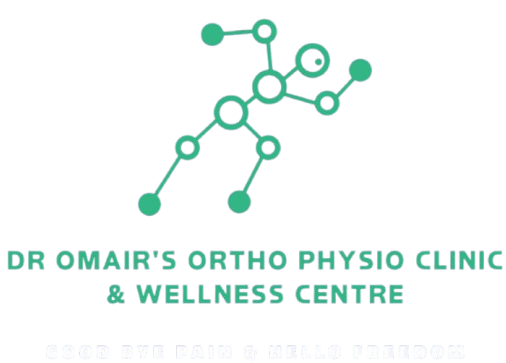Maintaining healthy shoulders is crucial for our daily activities, like lifting bags or reaching for items on high shelves. Many people face challenges with their shoulders, especially when it comes to the rotator cuff. The rotator cuff is a group of muscles and tendons that stabilize and move the shoulder, and issues here are surprisingly common. This blog aims to help you with physiotherapy rotator cuff exercises you can perform at home. These exercises are designed to aid in self-care and ensure your shoulders remain in top shape, improving your day-to-day movement.
Understanding Your Rotator Cuff
The rotator cuff is made up of four muscles and their tendons. These are the supraspinatus, infraspinatus, teres minor, and subscapularis. They surround the shoulder joint, allowing it to move with precision. When you lift, rotate, or stretch your arm, it’s your rotator cuff doing much of the work.
These muscles and tendons play a crucial role in everyday actions like reaching for something on a high shelf or throwing a ball. Even small injuries can impact the rotator cuff, making such movements painful or difficult. Injury to this area can lead to reduced mobility, making ordinary tasks hard to perform. This diminished ability can greatly affect your quality of life, emphasizing the importance of keeping your rotator cuff healthy and strong.
The Power of Physiotherapy Exercises for Rotator Cuff Health
Engaging in physiotherapy rotator cuff exercises offers many benefits. One main advantage is increased strength, which supports your entire shoulder girdle. Stronger muscles mean better stability and less risk of injury in the future. These exercises help improve flexibility, ensuring that your shoulder joints have a full range of motion.
Compounding the benefits, such exercises are excellent for managing pain. By regularly exercising the rotator cuff, the likelihood of pain or discomfort diminishes significantly. Moreover, good shoulder health contributes to improving your posture. With a strong and flexible rotator cuff, your shoulders remain in proper alignment, enhancing overall movement and posture in daily life.
Essential Rotator Cuff Exercises You Can Do at Home
Before starting any exercise routine, warming up is vital. Gentle arm circles or a few minutes of light cardio can prepare your muscles. Remember to listen to your body and not push too hard.
When choosing exercises, it’s essential to focus on both strengthening and improving flexibility. Here’s a selection for you:
Exercise 1: Pendulum Swings
Pendulum swings are simple yet effective. To do them, start by bending your waist. Allow one arm to hang down, and gently sway it in circles and then side-to-side. These swings enhance joint mobility and are perfect for those early in rehabilitation.
Exercise 2: External Rotation with Resistance Band
To perform this, anchor a resistance band at waist height. Hold the band with one hand, keeping the elbow close to your body. Pull the band by rotating your arm outward. This exercise targets the external rotators, fortifying the shoulder.
Exercise 3: Internal Rotation with Resistance Band
For internal rotations, anchor the band similarly. Pull the band towards your chest, keeping your elbow tight to your side. This action is critical for maintaining shoulder stability and balance.
Exercise 4: Scapular Squeezes (Shoulder Blade Retraction)
Stand or sit upright. Pull your shoulder blades together as if pinching something between them. Scapular squeezes are key to better posture and stabilizing the shoulder blade.
Exercise 5: Wall Crawls (Finger Walks)
Face a wall and use your fingers to “walk” your hands up until you feel a stretch in the shoulder. Wall crawls (or finger walks) are excellent for increasing range and shoulder flexibility.
Exercise 6: Shoulder Flexion and Extension with Light Weights
Hold light weights in each hand. For flexion, lift your arms straight ahead; for extension, move them backward. Begin with small weights, gradually increasing as strength improves.
Best Practices: Frequency and Progression of Exercises
For best results, perform these exercises two to three times a week. Start with one set of 10 repetitions, gradually increasing as your strength builds. Progress safely and increase difficulty or add more repetitions as your body allows, but avoid overexertion.
When to Seek Professional Physiotherapy Help
Watch for persistent pain, swelling, or if your condition worsens. Such signs demand a visit to a healthcare professional. Consulting them is crucial, especially for severe or prolonged conditions, to ensure you receive appropriate care.
Extra Tips for Maintaining Shoulder Health
To keep your shoulders healthy, focus on maintaining good posture throughout the day. Be aware of your position whether sitting or standing. Small changes, like adjusting your desk or chair, can have long-term benefits. Incorporating these shoulder-friendly habits can lead to sustained joint health.
Conclusion
Ongoing care through physiotherapy rotator cuff exercises can significantly enhance your shoulder’s range of motion. Making these exercises a regular part of your routine helps boost your quality of life, allowing you to move freely and without pain.
Taking the First Step: Your Guide to Shoulder Health
Start your journey to better shoulder health today. Incorporate these exercises, and for a personal approach, consult a professional. This will ensure your routine is safe and tailored to your specific needs, keeping your shoulders strong and resilient.

